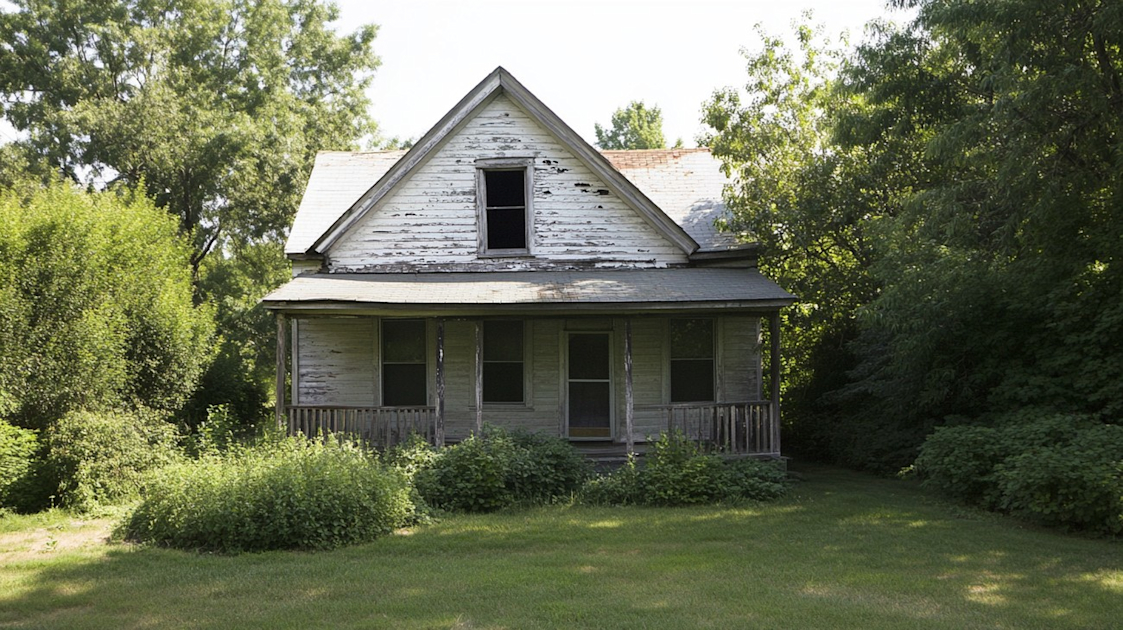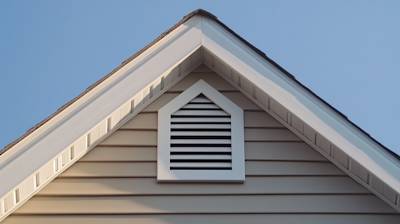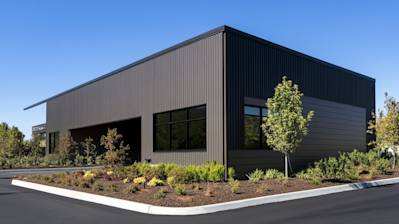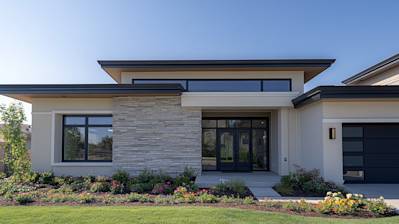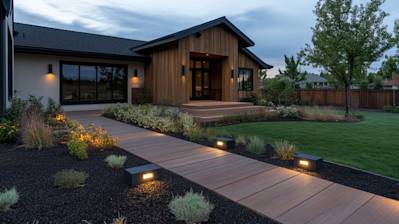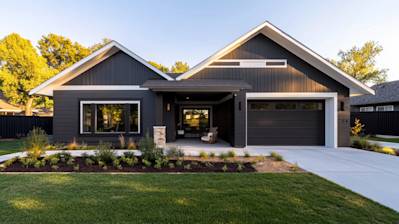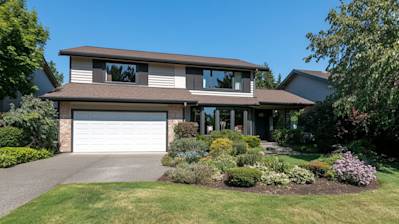Dry rot, also known as wood rot, is a common issue homeowners encounter, especially in their home siding. If not addressed promptly, it can become a significant, costly problem. The purpose of this blog post is to provide in-depth information on siding dry rot, including its causes, signs of existence, prevention, and rectification techniques.
Understanding Siding Dry Rot
Dry rot is a destructive, wood-decaying condition caused by particular types of fungi. These fungi grow by extracting nutrients from the wood, leading to loss of strength and integrity. While siding dry rot is called 'dry,' the fungus requires moisture to attack the timber. Therefore, it commonly affects areas with water exposure or inadequate ventilation like your home siding.
Primary Causes of Siding Dry Rot
One cannot effectively address siding dry rot without understanding its leading causes:
Moisture: Dry rot fungus thrives in damp environments, where it absorbs necessary nutrients from the wood.
Poor Ventilation: Lack of proper ventilation can lead to a buildup of humidity, creating a breeding ground for dry rot.
Poor Maintenance: Cracked paint or damaged siding can allow moisture to seep into the wood. Without proper maintenance, this moisture can cause fungus growth.
Identifying Siding Dry Rot: The Signs to Look Out For
Identifying dry rot in the early stages can save you from extensive siding damage. Here are signs that your siding might be suffering from this condition:
Crumbling or Fragile Wood: This state is one of the most visible signs of siding dry rot. Infected wood becomes weak and crumbly.
Fungus Growth: Dry rot is caused by a fungus; so, the presence of mushroom-like growths is a clear indication.
Darkened or Discolored Wood: Moisture can cause wood to darken or discolor, which could be a sign of dry rot.
Musty or Damp Odor: This scent is a reliable indicator for the presence of fungi-related issues, like dry rot.
Checklist of Siding Dry Rot Symptoms:
- Crumbling wood
- Visible fungus growth
- Discolored wood
- Musty odor
Treating and Repairing Siding Dry Rot
Siding dry rot treatment typically involves:
Confirming the Presence of Dry Rot: Professional contractors can help verify dry rot’s presence and determine affected areas.
Removing Infected Wood: Affected wood should be entirely removed to prevent further spread.
Addressing Moisture Issues: It's essential to fix the source of moisture, like leaks, to avoid future dry rot.
Replacing Infected Siding: Finally, install new, treated wood, ideally with a protective paint or sealant.
Preventing Siding Dry Rot
Fortunately, siding dry rot is preventable. Here are some measures homeowners can take:
Frequent Maintenance: Regular siding check-ups and repairing any damage can prevent moisture entry.
Ventilation: Siding should be adequately vented to allow moisture to escape, reducing the environment for fungus growth.
Use Treated Wood: Using pressure-treated timber or wood preservatives can help prevent fungus intrusion.
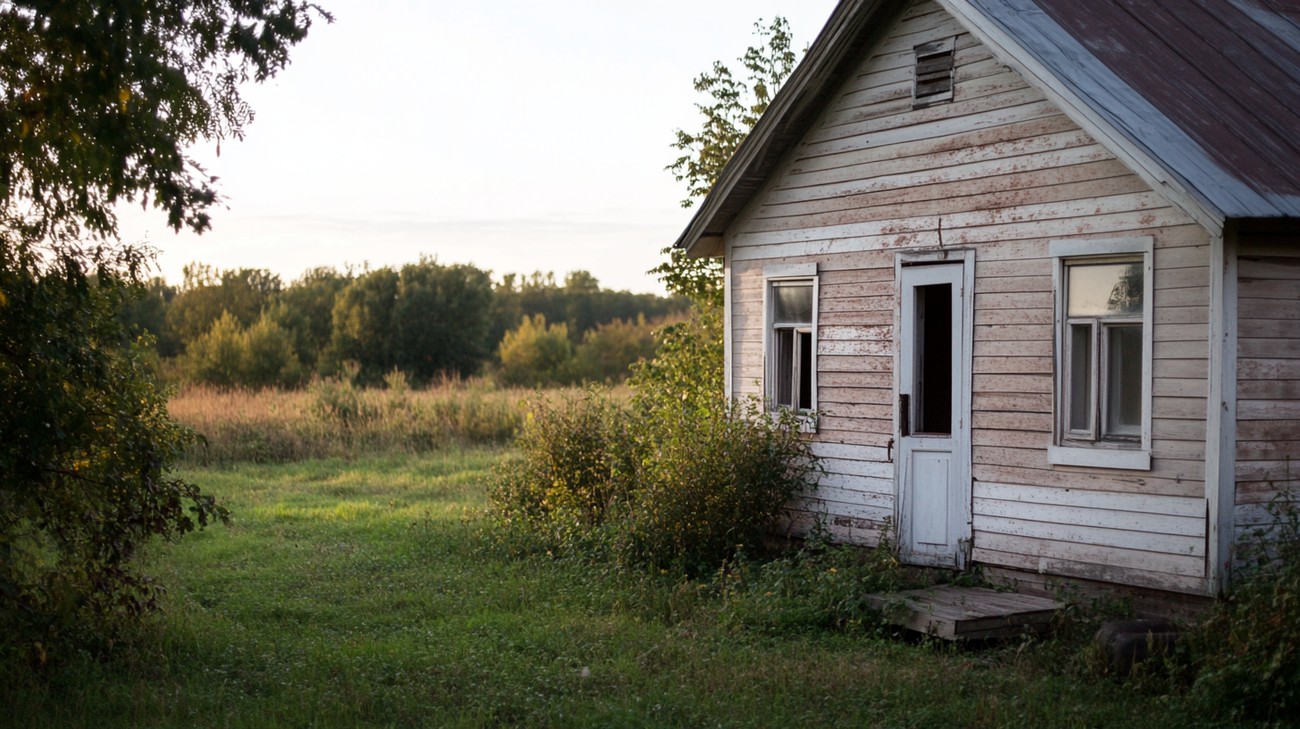
Frequently Asked Questions about Siding Dry Rot
What causes siding dry rot?
Siding dry rot is primarily caused by excessive moisture exposure, which leads to the growth of a certain type of fungi that feeds on the wood. Poor ventilation, lack of sunlight, or other factors that stop the wood from being able to dry out can also contribute to siding dry rot.
How can I prevent siding dry rot?
To prevent siding dry rot, it's essential to maintain your siding and keep it dry. Regularly inspect your siding for any signs of moisture, leaks, or damage. Roofing, gutter issues, or inadequate seals around windows, doors and plumbing can cause water to reach your siding, leading to dry rot. Therefore, it’s important to promptly attend to these potential problems.
Can siding dry rot spread?
Yes, unfortunately, siding dry rot can spread. If left untreated, the fungi that cause dry rot can continue to grow and eat away at the wood, affecting a larger and larger area over time. Therefore, it's crucial to address any signs of dry rot as soon as they are noticed.
Will paint or sealant stop siding dry rot?
While paint and sealant can provide some protection against moisture, they cannot halt or reverse existing dry rot damage. If the dry rot is severe enough, the siding will need to be replaced. Additionally, painting or sealing over dry rot can actually trap moisture in the wood, potentially making the problem worse.
How long does it take for dry rot to damage siding?
The pace at which dry rot damages siding can vary greatly. It typically depends on factors like the amount of moisture present, the type of wood, outside weather conditions, and how well the area is ventilated. The progression could be relatively slow, taking several months or even years, or it could occur quite rapidly.
Can I repair siding dry rot myself or do I need a professional?
The extent of the dry rot damage will determine whether it's feasible to carry out a DIY repair or if a professional is needed. Light surface dry rot may be manageable with DIY solutions, like using a wood hardener and filler. However, if the rot has penetrated deeply into the wood, professional intervention will be necessary to ensure the integrity of your home's structure is maintained.
Can siding dry rot cause health problems?
The presence of siding dry rot itself is not typically a direct health hazard. However, it can lead to conditions that might impact health. For instance, a home affected by dry rot may also have damp and mold problems, which can trigger allergies and respiratory issues.
Are there any alternatives to wood siding that won't be susceptible to dry rot?
Yes, there are several alternatives to wood siding that won't be prone to dry rot. Vinyl, brick, stone, fiber cement, and metal siding are all resistant to rot. However, each of these options has their own sets of pros and cons regarding cost, maintenance, and aesthetic appeal, and should be carefully considered before making a choice.

Cons of Siding Dry Rot
Unsightly Appearance
Damages the Aesthetic Appeal
Dry rot on siding can make your house look worn down and neglected. The rot often presents as discoloration, crumbling, cracking, or even as missing pieces of the siding material. This can significantly decrease the visual appeal of your home, detracting from its overall aesthetic and potentially lowering property value.
Diminishes Curb Appeal
Having visible dry rot on your home's siding can discourage potential buyers or renters if you ever decide to sell or lease your property. It will likely be interpreted as a sign of larger structural issues, and will certainly make your home seem less welcoming and attractive.
Structural Damage
Weakens the Siding
Dry rot starts off by affecting the surface of your siding but, if left untreated, it can weaken the structure of the siding itself. This can lead to the siding panels becoming loose or falling off completely, leaving the underlying structure of your home exposed to the elements.
Compromises the Integrity of the Home
Dry rot, if left unchecked, can pose a serious risk to the overall structural integrity of your home. The fungus that causes dry rot can spread to other parts of your home, such as the framing or the interior walls. This can slowly but surely weaken the entire structure of your home, eventually making it unsafe to live in.
Costly Repairs
Can Require Complete Siding Replacement
If the dry rot on your siding is extensive, a simple repair may not be sufficient. In such cases, the entire affected siding might need to be replaced. Depending on the type of siding you have and the extent of the damage, this can be a costly endeavor.
Increases Maintenance Costs
Even if the dry rot on your siding is not extensive enough to require a full replacement, you will still need to spend money on repairs. This means that you will have higher maintenance costs than you would if your siding was in good condition.
Health Risks
Produces Allergens
The fungus that causes dry rot can produce spores that can act as allergens for those with sensitive lungs or allergies. As a result, siding dry rot can indirectly contribute to health issues such as asthma attacks or allergic reactions.
Increases Risk of Mold and Mildew
By degrading the siding of your home, dry rot can allow excess moisture to seep into your house. This not only contributes to further rot, but can also promote the growth of mold and mildew, which come with their own set of health risks.
Pros of Siding Dry Rot
While there are obvious downsides to having dry rot on your siding, it is important to note that there are silver linings that come with recognizing and addressing siding dry rot early on.
Potential for Upgrades
Opportunity to Improve Your Home's Appearance
If siding dry rot necessitates a replacement of your siding, it can serve as an opportunity to upgrade the appearance of your home. You can choose a new siding material or color that freshens up your home’s exterior look, ultimately increasing its curb appeal.
Chance to Increase Energy Efficiency
Siding replacement also presents an opportunity to improve the energy efficiency of your home. Many modern siding materials boast excellent insulation properties which can help to keep your house warmer in the winter and cooler in the summer, potentially lowering your heating and cooling bills.
Identification of Underlying Issues
Discovery of Poor Installation or Material Flaws
Siding dry rot can often serve as an indicator that the installation of your siding was not done correctly or the material used was not up to par. Catching this early can help prevent further issues down the line.
Catch Structural Problems Earlier
As noted in the cons, dry rot can be a sign of larger structural issues. If discovered early, the dry rot can actually serve as an early warning signal, helping you to nip major problems in the bud. This in turn can save you from more severe structural damage and costly major repairs in the future.
Increased Home Maintenance Awareness
Improves Maintenance Habits
Discovering siding dry rot can serve as a reminder of the importance of regular home maintenance. Regular inspections can go a long way in preventing problems such as dry rot from occurring or from becoming too severe.
Educates on Siding Care
Being faced with dry rot can also educate homeowners on how to take care of their sidings properly. This experience can provide valuable lessons on the best materials to use, the signs of early dry rot to look out for, and how to prevent dry rot from happening in the first place.

Myths and Misconceptions About Siding Dry Rot
Myth 1: All Siding Is Susceptible to Dry Rot
One common misconception is that all types of siding are equally susceptible to dry rot. However, not all siding materials are created equal when it comes to their resistance against dry rot. For instance, vinyl and metal siding are nearly immune to dry rot because they don't contain any organic material for the fungi to feed on. Wood siding is the most susceptible, while engineered wood and fiber-cement siding fall somewhere in between.
Myth 2: Dry Rot Only Occurs in Wet Climates
Another common myth is that dry rot only occurs in areas with a wet climate. While damp conditions do encourage dry rot, it can occur anywhere if the conditions are right for the fungus that causes it. The fungus needs wood, oxygen, and moisture to thrive. Even in dry climates, these conditions can be met if there's poor ventilation, leaky pipes, or other sources of moisture.
Myth 3: Dry Rot Can Be Cured by Drying Out the Wood
Dry rot, despite its misleading name, cannot simply be cured by drying out the affected wood. Even though removing the source of moisture will stop the spread of the fungus, it won't kill it. The damage to the wood's structure is irreversible, and the only solution is to replace the affected wood.
Myth 4: Painting or Sealing Wood Siding Prevents Dry Rot
While painting and sealing wood siding can help to protect it from the elements, these measures are not foolproof against dry rot. Sealed and painted wood can still absorb moisture from the air, particularly in damp climates. And if the coating is damaged, water can get in and start the rotting process.
Myth 5: Dry Rot Is Only a Cosmetic Issue
Dry rot is not merely an aesthetic issue; it's a serious structural problem. It affects the integrity of the wood, making it crumbly and weak. If left untreated, dry rot can cause significant structural damage to a building, leading to costly repairs.
Myth 6: DIY Dry Rot Repairs Are Easy and Effective
Many home improvement enthusiasts believe that they can easily and effectively repair dry rot themselves. While DIY methods might seem to work in the short term, they often fail to fully address the problem. Without professional help, it's easy to overlook hidden rot or fail to remove all of the affected wood.
Myth 7: New Homes Don't Have Dry Rot
Just because a home is new doesn't mean it's free from dry rot. Improper construction techniques, using wood that hasn't been properly seasoned, or premature sealing of the wood can all lead to dry rot in new homes.
Myth 8: Pressure-Treated Wood Is Safe from Dry Rot
While pressure-treated wood is more resistant to dry rot, it's not immune. Over time, the chemicals used in the pressure-treating process can leach out, reducing its resistance to rot. Furthermore, if the wood is cut or drilled after treatment, the exposed areas are unprotected.
By debunking these common myths and misconceptions about siding dry rot, homeowners and builders alike can better understand this destructive fungus. With appropriate knowledge and preventative measures, they can help protect their homes and structures from the damaging effects of dry rot. Remember, when it comes to dry rot, prevention is always better than cure.
Summary
Siding dry rot can lead to significant damage if left unattended. Not only does it look unsightly but it also compromises the structural integrity of your home. Regular inspection and proper maintenance can remain helpful in preventing such type of decay. After all, a home isn't just where the heart is, it's also where a significant chunk of your savings is, so keep it safe from siding dry rot.
There's plenty to consider when it comes to siding dry rot. From simple preventative measures, such as keeping your siding well-painted and sealed, to in-depth inspections and repairs. Remember, taking care of your home's exterior isn't just for aesthetic reasons, but it can also help you avoid extensive damage caused by siding dry rot. Your home's exterior is its first line of defense against harsh weather, so keep it strong and rot-free to enjoy a cozy, worry-free sanctuary.
It can't be stressed enough that siding dry rot is more than just a cosmetic issue. It's a clear and present danger to your home's overall wellbeing. By keeping a vigilant eye on your siding, promptly addressing any problems that pop up, and committing to regular maintenance, you can nip this problem in the bud, and let your house continue to be the sturdy and welcoming place it should always be. After all, who wants their happy place to be a hotbed for siding dry rot? No one, that's who. So keep this menace at a safe distance.
About GVD Renovations & Remodeling
GVD Renovations & Remodeling is a trusted, locally-owned, and operated home renovation company located in Roseville, CA. We are passionate about transforming homes and bringing our clients' visions to life. With years of experience and a strong commitment to excellence, we specialize in residential renovations, siding installations, window replacements, and kitchen and bath remodels. Our professional team works closely with you at every step, ensuring that each project is completed to the highest standards of quality, and always meeting the agreed-upon timeframe. Simply put, we're the best at what we do, but don't just take our word for it, come experience the GVD difference.
Tags: siding, dry rot, home maintenance,



